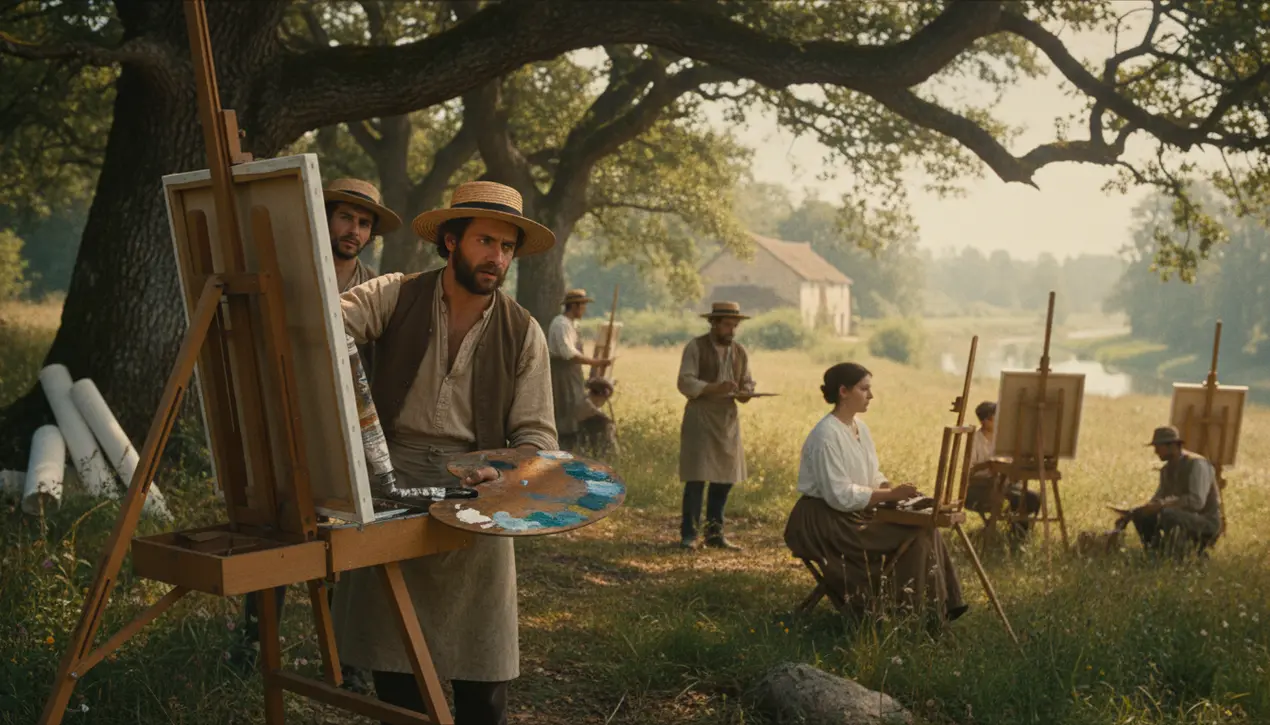
Entertainmenttheatre & artsArt Exhibitions
The Radical Origins of Outdoor Plein Air Painting.
AM
Amanda Lewis
4 hours ago7 min read
The seemingly genteel practice of setting up an easel in a sun-dappled field was, in its inception, a revolutionary act, a deliberate and potent rejection of the academic establishment that had for centuries dictated artistic truth. Plein-air painting’s radical origins are rooted in the 19th century, a period of profound social and technological upheaval that paralleled the shift in artistic consciousness.Before the Impressionists—who are most famously associated with the practice—artists were largely confined to their studios, constructing landscapes from memory, sketches, and classical ideals. The finished historical or mythological scene, rendered with meticulous, polished brushwork, was the ultimate goal, a product of controlled indoor light and institutional approval.What drove the first pioneers outdoors was a confluence of factors: a burgeoning Romantic spirit that valued raw, untamed nature over ordered artifice, and a crucial technological innovation—the invention of collapsible tin paint tubes by American portraitist John Goffe Rand in 1841. This portable palette liberated the artist from the studio as surely as the locomotive shrank continents, allowing them to capture the ephemeral, the immediate, the un-staged.The Barbizon school in France, with figures like Jean-Baptiste-Camille Corot and Théodore Rousseau, were among the early vanguards, forsaking Paris for the Forest of Fontainebleau to paint rural life and landscapes *sur le motif* (on the spot), imbuing their canvases with a newfound authenticity and atmospheric truth. Yet, it was the Impressionists who weaponized this approach.For Claude Monet, Pierre-Auguste Renoir, and their contemporaries, painting en plein air was not merely a convenience but a philosophical imperative. They sought to capture the very essence of light and its transient effects, a pursuit that demanded they work directly in the face of nature, racing against the movement of the sun.Their canvases, once dismissed as unfinished and shocking, were direct transcriptions of sensory experience—the flicker of light on water, the dapple of shade through leaves, the hazy glow of a summer afternoon. This was a democratization of vision, a declaration that modern life and its fleeting moments were as worthy a subject as any grand historical narrative.The critical and public scorn that initially met their work underscores just how radical this departure was; they were challenging the very hierarchy of subject matter and technique upheld by the Académie des Beaux-Arts. The legacy of this outdoor rebellion is immeasurable, cascading through Post-Impressionism into the Fauvism of Henri Matisse and the bold abstractions of the early 20th century, fundamentally reshaping our understanding of what a painting could be. It was a quiet revolution, fought not with manifestos but with brushes, one that traded the studio’s cloistered silence for the wind, the mud, and the glorious, unpredictable truth of the open air.
#plein air painting
#art history
#outdoor painting
#art techniques
#featured
Stay Informed. Act Smarter.
Get weekly highlights, major headlines, and expert insights — then put your knowledge to work in our live prediction markets.
Comments
Loading comments...
© 2025 Outpoll Service LTD. All rights reserved.